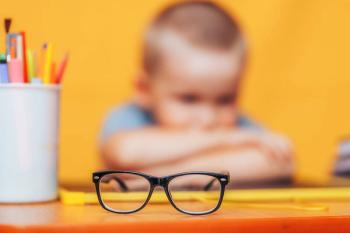
FDA confirms acceptability of remaining Phase 3 pivotal clinical trials for Palatin's PL9643 in DED
The FDA and Palatin agreed on a clear regulatory path for PL9643 NDA submission in DED. The company hopes to start patient enrollment to start in the fourth quarter of calendar year 2024.
Palatin Technologies Inc announced receipt of FDA correspondence confirming the acceptability of the protocols and endpoints for signs and symptoms of PL9643 Phase 3 pivotal clinical trials for
According to the company, the remaining Phase 3 clinical trial program consists of two Phase 3 studies, MELODY-2 and MELODY-3, and include sign and symptom endpoints in each study.1
Carl Spana, PhD, president and CEO of Palatin, said in the news release the company concluded a positive Type C meeting with the FDA and agreement on the remaining two Phase 3 trial protocols, including the sign and symptom endpoints, for PL9643 for the treatment of patients with DED.
“Current prescription options for DED are generally regarded as inadequate by many eye care professionals and patients due to low treatment efficacy, slow onset of action and/or poor tolerability,” Spana said in a news release. “PL9643, with its early onset of efficacy for both signs and symptoms, and its excellent ocular safety and tolerability profile, is positioned as a highly differentiated product with an opportunity to bring relief to millions of dry eye sufferers."
The company noted that patient enrollment in MELODY-2 and MELODY-3 are currently expected to begin in the fourth quarter of this year. Topline results are expected to be available by the end of 2025. The company also noted that if its recruitment goals are met and the trial results are successful, an NDA submission could be made in the first half of calendar year 2026.
The company noted that it has successfully completed MELODY-1, its first Phase 3 study, in February 2024. Palatin reported that the co-primary symptom endpoint of pain met statistical significance (P<0.025) and 7 of 11 secondary symptom endpoints met statistical significance (P<0.05), at the 12-week treatment period.
Earlier this year, the company noted that while the co-primary sign endpoint and secondary sign endpoints demonstrated positive treatment effects over vehicle in the ITT population, they did not achieve statistical significance. In the unadjusted, planned analysis the co-primary endpoints and secondary endpoints did not reach statistical significance.2
Data from MELODY-1 demonstrated a rapid onset of efficacy and multiple symptom endpoints, including the co-primary pain endpoint, which met statistical significance (P<0.05) at the 2-week timepoint and continued to improve over the 12-week treatment period. Also, at the 2-week timepoint, multiple sign endpoints, including all 4 fluorescein staining endpoints, met statistical significance (P<0.05). Importantly, PL9643 treatment demonstrated an excellent safety and tolerability profile.1
References:
Palatin Technologies, Inc. FDA Confirms Acceptability of Palatin’s Remaining Phase 3 Pivotal Clinical Trials for PL9643 in Dry Eye Disease (DED). Prnewswire.com. Published August 28, 2024. Accessed September 6, 2024.
https://www.prnewswire.com/news-releases/fda-confirms-acceptability-of-palatins-remaining-phase-3-pivotal-clinical-trials-for-pl9643-in-dry-eye-disease-ded-302232457.html Palatin Announces Results of PL9643 MELODY-1 Pivotal Phase 3 Clinical Trial in Patients with Dry Eye Disease (DED). Press release. Accessed February 29, 2024. Published February 28, 2024.
https://palatin.com/press_releases/palatin-announces-results-of-pl9643-melody-1-pivotal-phase-3-clinical-trial-in-patients-with-dry-eye-disease-ded/
Newsletter
Want more insights like this? Subscribe to Optometry Times and get clinical pearls and practice tips delivered straight to your inbox.








































